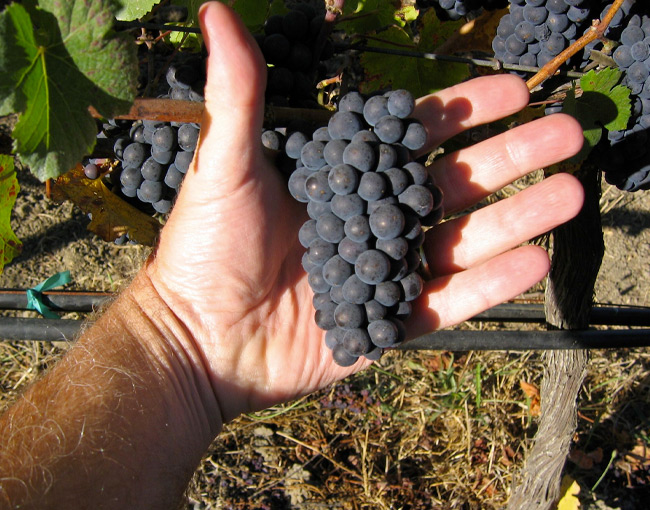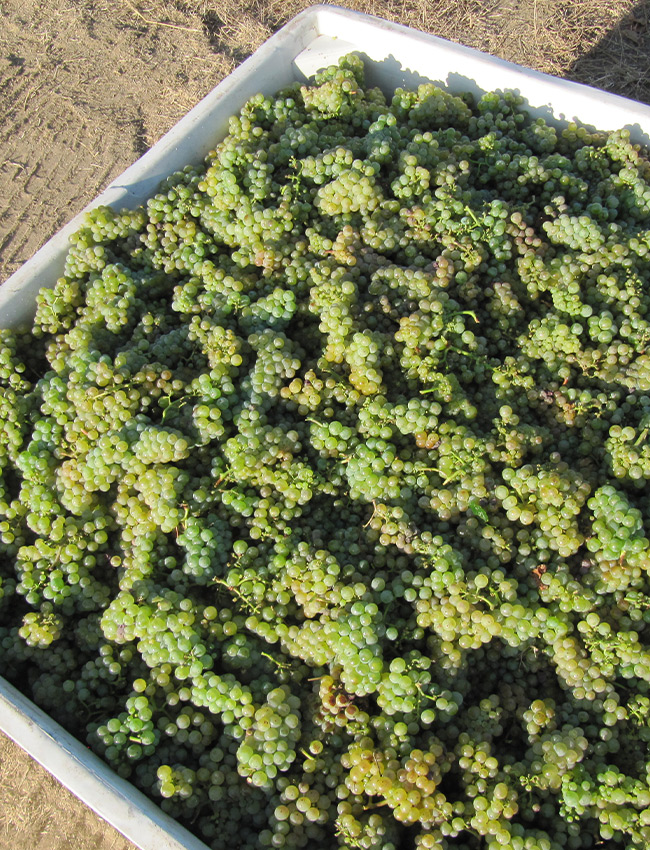Banter or Bullshit?
“Natural” wine: Bullshit or a Bonanza?
I applaud innovation, but a comprehensive definition that adequately codifies and enforces “natural” winemaking practices doesn’t yet appear to exist. The closest appears to be from an enthusiastic cabal of vintners called Vins Methode Natures who created some initial guidelines. I’ve carefully read and re-read these guidelines en Français and in English and applaud their initial effort. But at least as I understand them, several elements of the guidelines are internally regulated, having wineries themselves make a “declaration of honor” of what they did - or did not do - in the vineyard and cellar. While this is a well-meaning good start, without outside oversight and enforcement, isn’t this letting the fox guard the henhouse?
Most countries don’t have a definition of “natural” and the term “natural” isn’t allowed in many European Union countries. Critic Robert Parker labeled natural wines a “fraud” and even the natural wine uber-evangelist Alice Feiring, when grilled by Decanters Jancis Robinson M.W. about policing the new Vins Methode Natures guidelines conceded, “It’s not well thought out.” France’s respected governing body for all things fine wine-related, the Institut National des Appellations d’Origine (INAO), remains opaque on the groups’ effort, instead only “recognizing” it.
The aforementioned guidelines require the use of “indigenous” yeast. But what exactly is “indigenous” yeast, scientifically? Is this “indigenous” yeast indigenous to the vineyard(s) or to the winery facility - or both? I think most vintners, when using the term “indigenous” speak to the vineyard and its yeasts - in an effort to convey the sites natural terroir.
Yeasts are efficient organisms and are ubiquitous. For wines, they exist to do a simple job; ferment fruit sugars. Many widely available commercial yeasts are extraordinarily neutral, e.g. Champagnes’ Prise de Mousse. They don’t interfere or overpower the expression of the vineyard or grape and provide conscientious vintners very specific, measurable outcomes, allowing superb vineyard and varietal expression to be at the forefront. So why all the hoopla about the unknown, uncertain “indigenous” yeasts? Some of these can be really quite nasty and can lead to a surplus production of volatile acidity (vinegar). And it is well documented that the microbiota found on grapes and stems from the vineyard typically die during fermentation when ~6% alcohol level is reached.

So how does a vintner using so-called “indigenous” yeasts ferment sweet grape must to dryness with only so-called “indigenous” yeasts? Why aren’t those fermentations stuck with unwanted residual sugar? Is it because myriad other yeasts have unknowingly crept into the winery environment, those that do not come from said vineyard (and thus are not “indigenous”), and yet have slyly completed the fermentation? Could some of these other yeasts actually be commercial yeasts that found their way into this environment? As Jeff Goldblum wryly says in Jurassic Park; “Life finds a way.” And if so, doesn’t this blow a core tenet of this “indigenous yeast” convo out of the water? I’m not a biologist/mycologist – but it’s a good discussion.
On a practical level, how do these “natural” vintners, during their frenetic harvest, determine that the yeasts in question are “indigenous”? During harvest, we winemakers are very busy; overseeing fermentations, traveling to many different vineyards, picking up supplies at other wineries, warehouses, etc.. So how does one know that the yeasts fermenting in their vats come only from their vineyard and not off the soles of their shoes? Or, how do they certify that yeasts in their vats didn’t arrive on a delivery truck whose previous stop was at a large winery down the road replete with commercial yeast? And what 3rd party entity is overseeing this indigenous yeasts process, vat by vat, winery by winery, appellation by appellation?

So given the low likelihood that a vintners “vineyard yeast” is the only yeast in a particular vat, are these “natural” vintners then somehow removing the “non-indigenous” yeasts from their vat - cell by cell? If so, I’d like to see that black magic.
In summary, my sense is that this premise; that “indigenous” yeast unequivocally delivers a better qualitative expression of a particular terroir or grape type is likely based on lazy (or at least incomplete) methodology, flawed science, poor oversight, and often includes a pungent dose of marketing bullshit. It would be funnier if this romantic notion of “indigenous” yeast wasn’t so pervasive in wine comms today.
Moving on to the sulfur dioxide (SO2) aspirations of this movement, these vintners have chosen a threshold of 30 ppm (parts per million) as a level above which the wine cannot be labeled “natural”. This seems quite random. How is this naturally labeled wine different from so many other bottles around the world? My ’22 Domaine Jonathan Pey Morgon “Bellevue” has very low total SO2 (30ppm) and I prove it by publishing the laboratory results here). And my wine is neither labeled nor promoted as a “natural” wine. I’ve also analyzed a few large production wines for SO2 levels and many were very close to “natural” guidelines. (See more thoughts on SO2).
Net-net, how can a winemaker (or sales rep, restaurateur, somm, retailer, journalist, etc) label or call a wine “natural” if a) there is no codified definition of “natural” wine in most countries, b) only an individual vintner’s “honor” statement (and 70 Euro fee) affirms that this member abides by this groups’ guidelines, c) the ability to separate out truly indigenous yeast doesn’t scientifically exist, and d) the SO2 guidelines (30 ppm) are a non sequitur because many “commercial” wines already fall into this category? And while these guidelines make mention of a “certifying body - on a random basis” there appear to be no structural/legal mechanisms outside this group to police member activities - or the wine in bottle.
Next time you hear; “We feature/make natural wines made from local yeasts with low sulfites” perhaps ask the vintner, wine shop or somm for specific, measurable answers to what I have posited above. Enjoy the discourse. And caveat emptor mes amis.
In closing, I’m sometimes asked if my wines are “natural”. Let’s peel this back a bit. For starters, I don’t label my wines “natural”. But I do hand-prune and hand-harvest healthy, natural grapes from carefully managed vineyards; many organically farmed and certified. Some are also dry farmed and draft horse ploughed. Some see regenerative viticultural (no plow) practices. These vines and their verdant mid rows naturally sequester tons of carbon every year. My grapes ferment with whatever yeasts are floating around (indigenous to the vineyard haha, cellar, ambient, commercial and wild). Millions of these diverse yeast cells naturally transform the grapes natural sugar into carbon dioxide (CO2) and alcohol during fermentation. These yeasts also naturally produce sulfur dioxide (SO2) during fermentation, part of which stays naturally in my finished wine. I don’t do any of the winemaking voodoo that large factory wineries use like flash fermentation or cryo-extraction and don’t add mega-purple or other colorants. After a few weeks, my wines naturally ferment down to dryness (because there is probably some cultured yeast in there that can support fermentation with alcohol below 6%). I then gently press the skins and juice and mature my wines in (mostly) neutral vessels to capture the purity of the site or the grape type. Some lots may see a soupçon of French oak barrel maturation - these barrels being naturally grown in sustainable French forests that naturally sequester tons of carbon every year. After that I shepherd my wines into low/medium-weight post-consumer recycled glass bottles with minimum effective (both naturally occurring and/or added) SO2, minimum/no filtering or other interventions. For full transparency, I display all 3rd-party laboratory analyses of my wines. My labels are made from FSC-certified recycled paper or recycled cotton and printed with EU-certified compostable inks and the aforementioned bottles are sealed with FSC-certified natural heritage corks.
But back to the question; “Are my wines “natural”?” You decide.
I’m certainly not an expert so if you don’t agree please with me take a look at these better-informed producers and experts who share their opinions on this marketing hype